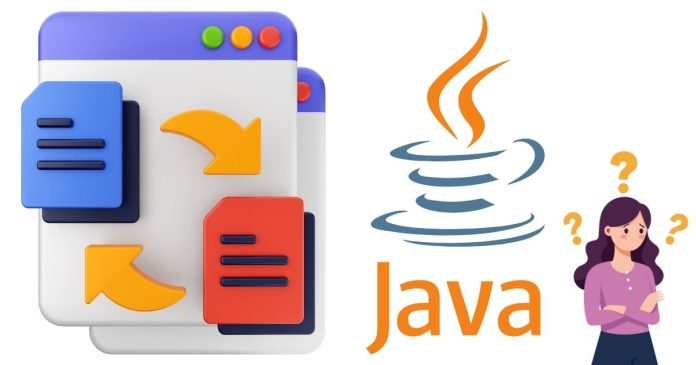In Java, converting a float to a String is a common task, often needed when displaying float values to users, logging, or performing string manipulations. Fortunately, Java provides several simple and efficient ways to achieve this.
Methods to Convert a Float to a String in Java
Here are the most commonly used methods to perform this conversion:
1. Using String.valueOf(float)
The String.valueOf() method is one of the most popular ways to convert a float to a String. It is straightforward and ensures that the float is converted properly.
Example:
public class FloatToStringExample {
public static void main(String[] args) {
float value = 3.14f;
String result = String.valueOf(value);
System.out.println("Converted String: " + result);
}
}
Output:
Converted String: 3.14
Why Use It?
- It handles
nullvalues gracefully by returning the string"null". - It’s concise and easy to read.
2. Using Float.toString(float)
The Float.toString() method is specifically designed for converting a float to a String. It gives the same result as String.valueOf() but is tied directly to the Float wrapper class.
Example:
public class FloatToStringExample {
public static void main(String[] args) {
float value = 7.89f;
String result = Float.toString(value);
System.out.println("Converted String: " + result);
}
}
Output:
Converted String: 7.89
Why Use It?
- It’s explicitly intended for converting
floatvalues, making the intent of the code clear.
3. Using String Concatenation
You can concatenate the float value with an empty string ("") to implicitly convert it to a String.
Example:
public class FloatToStringExample {
public static void main(String[] args) {
float value = 5.67f;
String result = value + ""; // Implicit conversion
System.out.println("Converted String: " + result);
}
}
Output:
Converted String: 5.67
Why Use It?
- It’s quick and requires minimal code.
- However, it’s less readable and less preferred for production code compared to other methods.
4. Using String.format()
If you need more control over the formatting (e.g., controlling the number of decimal places), you can use the String.format() method.
Example:
public class FloatToStringExample {
public static void main(String[] args) {
float value = 3.14159f;
String result = String.format("%.2f", value); // Formats to 2 decimal places
System.out.println("Converted String: " + result);
}
}
Output:
Converted String: 3.14
Why Use It?
- It’s ideal when you need to format the float to a specific precision or style.
5. Using DecimalFormat
For advanced formatting options, you can use the DecimalFormat class from the java.text package.
Example:
import java.text.DecimalFormat;
public class FloatToStringExample {
public static void main(String[] args) {
float value = 123.4567f;
DecimalFormat df = new DecimalFormat("#.##"); // Limits to 2 decimal places
String result = df.format(value);
System.out.println("Converted String: " + result);
}
}
Output:
Converted String: 123.46
Why Use It?
- It provides flexibility and customizability for formatting numeric values.
Comparing the Methods
| Method | Use Case | Advantages |
|---|---|---|
String.valueOf() |
General-purpose conversion. | Simple and reliable. |
Float.toString() |
Specifically for floats. | Clear intent for float conversion. |
Concatenation (+ "") |
Quick, but less recommended. | Minimal code. |
String.format() |
When precision or specific formatting is required. | Customizable formatting. |
DecimalFormat |
For advanced numeric formatting options. | Highly flexible and precise control. |
Example: Combining Methods
You can combine these methods depending on your requirements. For instance, you may use String.format() for formatting and String.valueOf() for general-purpose conversion.
public class FloatToStringExample {
public static void main(String[] args) {
float value = 98.765f;
// General conversion
String general = String.valueOf(value);
// Custom formatting
String formatted = String.format("%.1f", value);
System.out.println("General Conversion: " + general);
System.out.println("Formatted Conversion: " + formatted);
}
}
Output:
General Conversion: 98.765
Formatted Conversion: 98.8
Converting a float to a String in Java is straightforward, thanks to the various methods provided by the language. For most use cases, String.valueOf() or Float.toString() is sufficient. However, if you need specific formatting or precision, consider using String.format() or DecimalFormat.
By choosing the right method for your needs, you can efficiently convert float values to strings while maintaining code clarity and readability.


